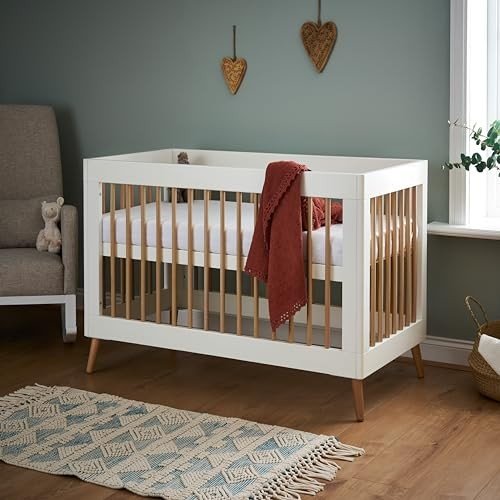
Good Cribs
Add a review FollowOverview
-
Founded Date November 11, 1971
-
Sectors Accounting / Finance
-
Posted Jobs 0
-
Viewed 24
Company Description
10 Quick Tips About Baby Cots
The Essential Guide to Baby Cots in the UK
Picking the ideal cot for a newborn can be a difficult task for new moms and dads. With various options offered in the UK market, understanding the features, safety requirements, and kinds of Baby Crib cots is vital. This short article intends to supply a helpful introduction of the various baby cots offered, their advantages, and factors to consider for parents in the UK.
Types of Baby Cots
There are several kinds of baby cots available in the UK, each developed to fulfill different needs and preferences. The most typical types consist of:
-
Standard Cots: These are conventional baby cots that supply a safe sleeping environment for babies and infants. They typically feature adjustable bed mattress heights to suit the baby’s growth.
-
Convertible Cots: Also called 3-in-1 or 4-in-1 cots, these versatile options can transform from a cot to a young child bed and even into a full-size bed. They are developed for prolonged use, making them an affordable choice.
-
Moses Baskets: Ideal for the early months, Moses baskets are light-weight and portable, making them easy to walk around the home. They usually come with a detachable cover and a soft mattress.
-
Travel Cots: These cots are foldable and compact, specifically created for parents on the go. They come with a travel bag for easy transportation and are ideal for sleepovers or vacation journeys.
-
Co-Sleepers: These cots are developed to connect to the parent’s bed, permitting easy access to the baby throughout the night while ensuring the little one has their own safe sleeping space.
Table 1: Comparison of Baby Cot Types
| Type of Cot | Age Range | Mobility | Durability | Rate Range |
|---|---|---|---|---|
| Standard Cot | Birth to 2 years | Low | Moderate | ₤ 120 – ₤ 300 |
| Convertible Cot | Birth to 5+ years | Moderate | High | ₤ 150 – ₤ 500 |
| Moses Basket | Birth to 6 months | High | Low | ₤ 40 – ₤ 150 |
| Travel Cot | Birth to 3 years | Extremely High | Low | ₤ 50 – ₤ 200 |
| Co-Sleeper | Birth to 6 months | Moderate | Low | ₤ 100 – ₤ 300 |
Safety Standards for Baby Cots in the UK
Guaranteeing the security of a baby cot is vital. In the UK, all cots must abide by particular policies to ensure they are safe for use. The following requirements need to be met:
-
British Standard BS EN 716: This standard sets requirements for the security and performance of kids’s cots and folding cots.
-
Product Safety: The cot must be made from non-toxic materials that are devoid of hazardous chemicals.
-
No Sharp Edges: Ensure there are no sharp edges or protruding points that could hurt the baby.
-
Stable Structure: The cot must have a steady base to avoid tipping, and the slats must be spaced properly to avoid the baby’s head from getting caught.
-
Bed mattress Fit: The mattress must fit comfortably in the cot, without any spaces that could pose a suffocation danger.
Functions to Consider When Choosing a Baby Cot
When picking a baby cot, moms and dads ought to keep the following functions in mind:
-
Adjustable Mattress Heights: Cots with adjustable heights make it easier to place and raise the baby as they grow.
-
Material Quality: Look for sustainably sourced wood or products that are both durable and safe for babies.
-
Alleviate of Assembly: Cots that are easy to put together and dismantle can conserve moms and dads time and disappointment.
-
Storage Options: Some cots feature integrated storage drawers to keep baby essentials arranged.
-
Design and Aesthetic: Choose a cot style that fits well with the home design while guaranteeing it is practical and safe.
Frequently Asked Questions About Baby Cots in the UK
Q1: How much should I anticipate to invest in a baby cot?
A1: Prices for baby cots in the UK can differ extensively based on type and brand name, varying from ₤ 40 for a basic Moses basket to over ₤ 500 for high-end convertible cots.
Q2: When can my baby relocation to a cot from a crib?
A2: Most babies transition to a cot in between 6 months and 2 years, depending upon their size and mobility. It’s essential to monitor their developmental turning points.
Q3: Are second-hand cots safe to use?
A3: While second-hand cots can be safe, ensure they fulfill existing safety standards and reveal no indications of wear, damage, or recalls. It’s advisable to avoid older designs that may not comply with present guidelines.
Q4: Can I use a cot for a co-sleeping plan?
A4: Co-sleeper cots are developed particularly for this purpose, permitting you to keep your baby close while preserving a safe sleeping environment. Always abide by co-sleeping safety suggestions.
Q5: What is the very best mattress type for a baby cot?

A5: A company and flat bed mattress is advised for babies. Avoid soft bed mattress, as they increase the risk of suffocation. Ensure it fits comfortably in the cot with no spaces.
Picking the right baby cot is a critical decision for brand-new moms and dads in the UK. It needs careful factor to consider of security guidelines, kinds of cots available, and includes that cater to their specific needs. By being educated, parents can create a safe and comfortable sleeping environment for their newborns, making sure peace of mind throughout those vital early months. Ultimately, investing time in research can result in an informed decision that balances security, comfort, and usefulness.


